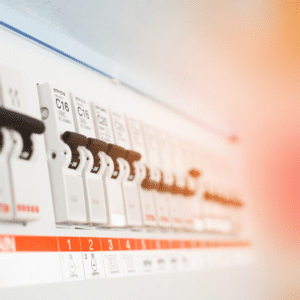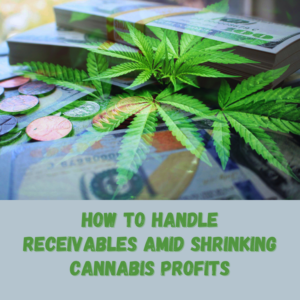UV Light: A Key Tool for Sanitation in Cannabis Production


Sanitation is a critical aspect of cannabis production, directly impacting plant health and product quality. Traditional cleaning methods, while effective, often involve chemicals that can leave residues. An increasingly popular and chemical-free alternative is ultraviolet (UV) light. This article evaluates the effectiveness of UV light in eliminating pathogens on surfaces and in the air within cannabis facilities, highlighting its role in maintaining a clean and healthy growing environment.
Understanding Ultraviolet (UV) Light
Ultraviolet light is a type of electromagnetic radiation with wavelengths shorter than visible light but longer than X-rays. It is divided into three categories:
- UVA (320-400 nm): Least harmful, used in black lights.
- UVB (280-320 nm): Causes sunburn and is used in medical treatments.
- UVC (100-280 nm): Most germicidal, used in disinfection and sanitation applications.
How UV Light Kills Pathogens
UVC light, particularly at wavelengths around 254 nm, has potent germicidal properties. It works by damaging the DNA and RNA of microorganisms, including bacteria, viruses, and fungi, rendering them unable to reproduce and effectively killing them. This process, known as ultraviolet germicidal irradiation (UVGI), is the basis for using UV light in sanitation.
Effectiveness of UV Light on Surfaces
UV light is highly effective at disinfecting surfaces in cannabis facilities:
- Immediate Results: UV light can kill up to 99.9% of pathogens on exposed surfaces within minutes.
- Non-Chemical: Unlike chemical disinfectants, UV light leaves no residues, making it safe for use around plants.
- Broad Spectrum: Effective against a wide range of pathogens, including mold spores, bacteria, and viruses.
Application Methods for Surface Disinfection
Various methods can be employed to sanitize surfaces using UV light:
- UV Lamps: Portable or fixed UV lamps can be used to irradiate surfaces, ensuring thorough coverage.
- UV Robots: Autonomous robots equipped with UV lights can navigate the facility, disinfecting surfaces as they move.
- UV Cabinets: Items can be placed inside UV cabinets for disinfection, ensuring that all surfaces are exposed to UV light.
Effectiveness of UV Light in Air Sanitation
Airborne pathogens pose a significant risk in cannabis facilities, and UV light can effectively sanitize the air:
- Air Handling Units: Integrating UV light into HVAC systems can disinfect air as it circulates, reducing the risk of airborne contamination.
- Upper-Room UVGI Systems: These systems irradiate the upper portion of the room, disinfecting the air as it naturally circulates.
- Portable UV Air Purifiers: These devices can be moved around the facility, providing targeted air disinfection.
Benefits of Using UV Light in Cannabis Facilities
Incorporating UV light into sanitation protocols offers several benefits:
- Enhanced Sanitation: UV light provides a high level of disinfection, reducing the risk of disease outbreaks.
- Chemical-Free: Eliminates the need for chemical disinfectants, avoiding potential chemical residues on plants and surfaces.
- Energy Efficiency: Modern UV systems are energy-efficient, reducing operational costs.
- Ease of Use: UV disinfection systems are generally easy to operate and integrate into existing sanitation protocols.
Limitations and Considerations
While UV light is highly effective, there are limitations and considerations to keep in mind:
- Shadowed Areas: UV light cannot disinfect areas that are not directly exposed, such as shaded or covered surfaces.
- Safety Concerns: Direct exposure to UV light can harm skin and eyes, so proper safety measures must be implemented.
- Material Compatibility: Prolonged exposure to UV light can degrade certain materials, requiring careful application.
Future Trends in UV Light Sanitation
The use of UV light in sanitation is rapidly evolving, with several emerging trends:
- Advanced UV Technologies: Development of more efficient and durable UV light sources.
- Integration with IoT: Combining UV systems with Internet of Things (IoT) technology for automated and optimized disinfection.
- Portable and Wearable UV Devices: Innovations in portable and wearable UV devices for targeted and flexible disinfection.
Environmental Impact of UV Light Sanitation
Using UV light for sanitation is environmentally friendly compared to chemical disinfectants:
- No Chemical Residues: UV light does not produce harmful residues, ensuring a cleaner environment.
- Reduced Chemical Use: Decreases the reliance on chemical disinfectants, reducing potential environmental contamination.
Best Practices for Implementing UV Light in Cannabis Facilities
To maximize the effectiveness of UV light in cannabis facility sanitation, follow these best practices:
- Regular Maintenance: Ensure UV systems are regularly maintained and cleaned to operate at peak efficiency.
- Safety Protocols: Implement strict safety protocols to protect workers from UV exposure.
- Comprehensive Coverage: Use a combination of surface and air UV disinfection methods to ensure comprehensive pathogen control.
Ultraviolet (UV) light is a powerful tool for sanitation in cannabis production facilities. Its ability to kill pathogens on surfaces and in the air makes it an invaluable asset for maintaining a clean and healthy growing environment. By integrating UV light into their sanitation protocols, cannabis growers can enhance plant health, reduce disease outbreaks, and improve overall yield quality. As technology advances, the role of UV light in facility sanitation is set to become even more prominent, offering a sustainable and effective solution for pathogen control.










